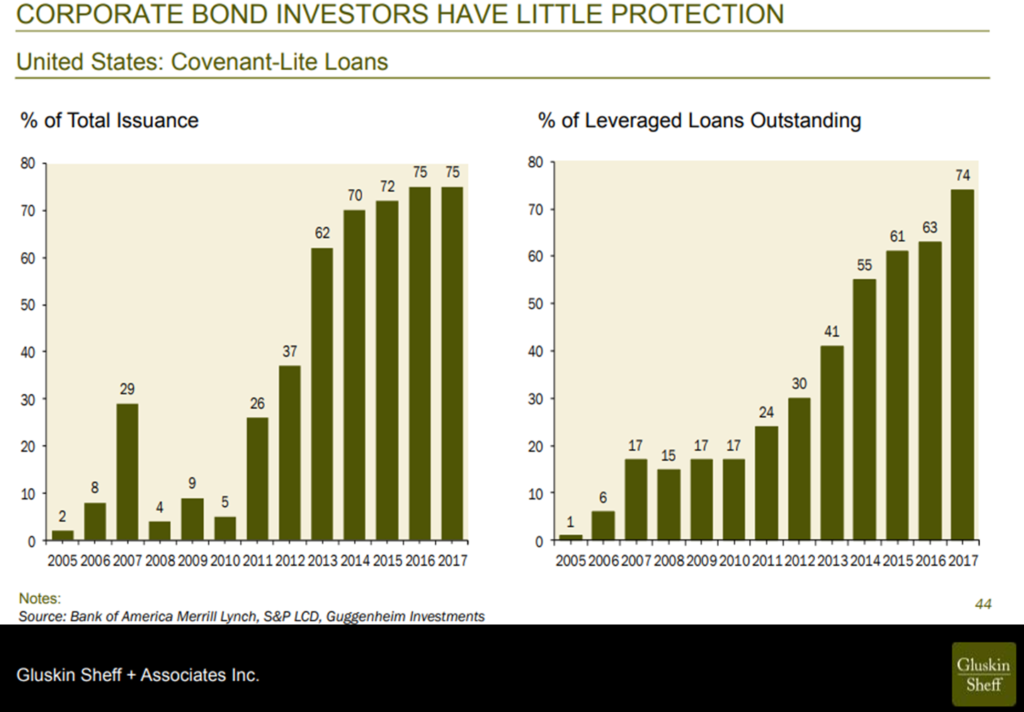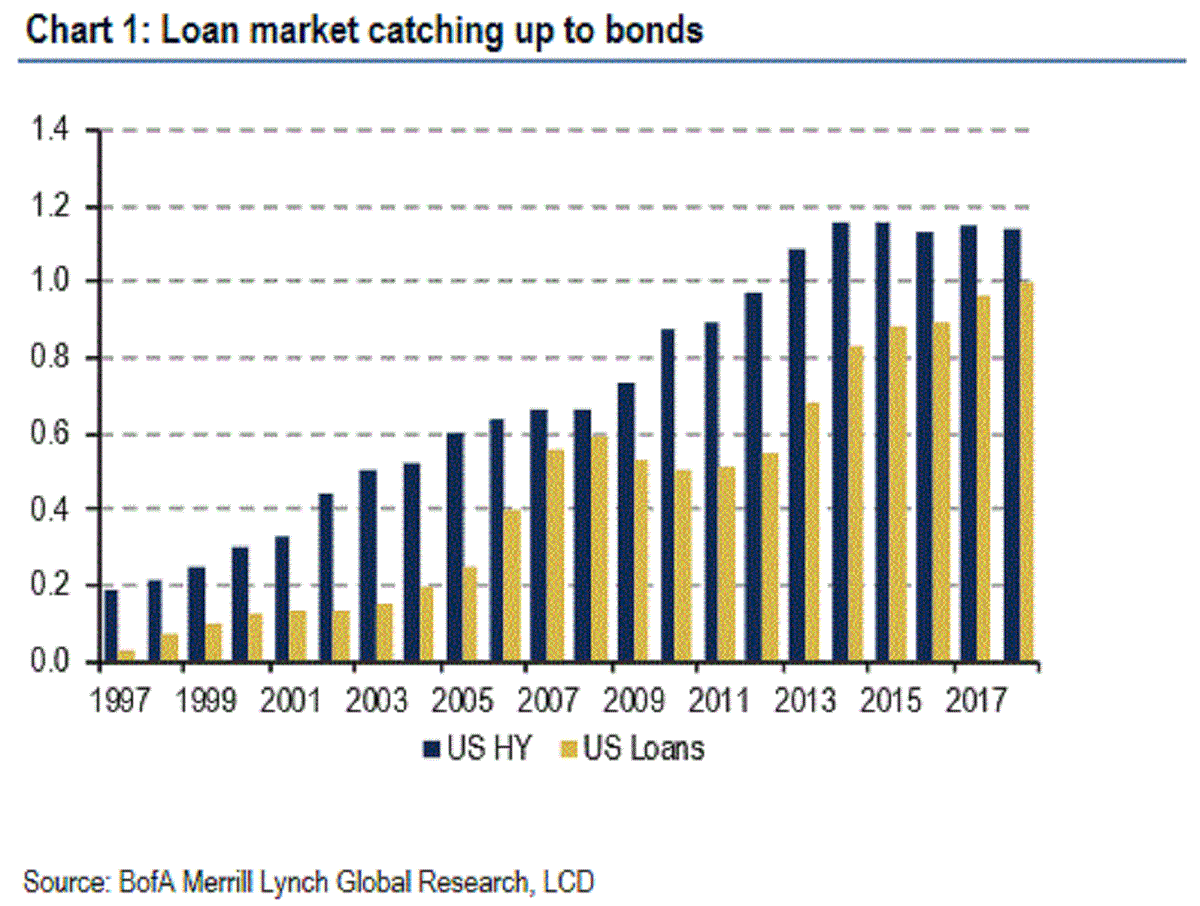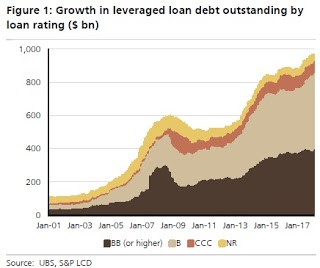From Narrow Road Capital, May 30:
The US high yield market has grown larger and riskier since the
financial crisis. Issuers of debt have the whip hand as buyers compete
to gain an allocation in the face of surging demand from CLOs and retail
funds. Companies are emboldened to seek ever weaker covenants and are
taking advantage of the current conditions to borrow more at lower
margins. It’s as if the financial crisis never happened and the lessons
from it are ancient history.
Whilst the timing of a downturn in high yield debt isn’t predictable,
the outcomes when it does happen are. More debt, of lower quality, with
weaker covenants means the coming downturn will be bigger, longer and
uglier. A quick review of some key data makes this clear.
Firstly, the size of the US high yield bond market and leveraged loan market are both close to double what they were in 2007.
Not only is the debt outstanding larger, but the credit ratings have
shifted downwards on leveraged loans. Lower credit ratings mean a higher
percentage of the outstanding debt will default when liquidity dries
up.
The other key indicator to watch is the share of the loan market that
has weak covenants. In 2007, 17% of outstanding loans were
covenant-lite. Today it’s over 75% with over 80% of new issuance
lacking decent covenant protections. Weak covenants delay the
occurrence of an event of default, which allows zombie companies to
continue operating until they either exhaust their cash reserves or
cannot refinance maturing debt.

High yield bulls are likely to cite the substantial equity
contributions from sponsors and healthy interest coverage ratios as
reasons not to be overly concerned. These are definitely much better
than 2007, but these indicators do have some inbuilt weaknesses. Equity
contributions are only as good as the market valuations they are based
on. As US equities are arguably overpriced, sponsors are having to pay
more than they historically would have to purchase a company. If
price/earnings ratios revert to lower levels, company valuations will
fall wiping out some of the equity cushion and making the debt a higher
proportion of the enterprise value....MUCH MORE
HT:
ZeroHedge


